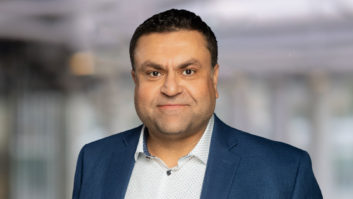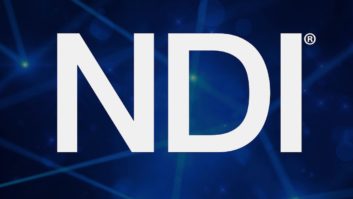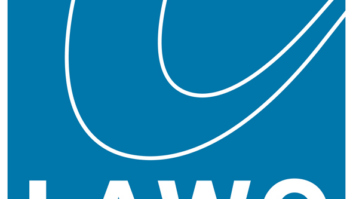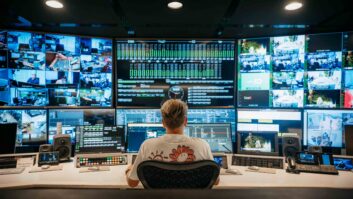What’s your professional background?

In the early days of my career, I was in the throes of broadcast, production, and content creation. I worked as an executive producer in a variety of industries including sports, music and documentaries; creating visual content for audiences was not only a career choice but a personal passion of mine.
Shortly after I began my career, I started to focus in on the technology behind content creation and the ways in which technology could produce better end results for audiences. I worked for a variety of companies including Dolby Laboratories as the director of global broadcast services and at Nokia as the head of virtual reality technologies business unit. I joined Nokia in the VR and AR department at an interesting time as those technologies were taking off in 2016 and I worked to further develop how they could benefit content creators in the long run.
After Nokia, I shifted to consulting with a number of companies to grow the business aspect and prepare products for successful launches. Developing the strategy behind how these companies could effectively go to market was what ultimately led me to NDI.
As a rapidly growing company, I saw the success, potential and appeal in new markets within NDI and knew it was on the edge of becoming a phenomenal tool for media creatives globally. I now sit as the president and GM of NDI Global.
What stood (and stands) out for you about NDI?
My interest in NDI looks like a Venn diagram of my background and prior career experience. Content creation, technology, and business growth; where the three meet is within NDI.
NDI is built by, and for, content creators, from large broadcasters to individuals and everybody in between. There is an ever-growing number of production technologies becoming a part of the NDI ecosystem every day. And, as I noted, NDI is experiencing exponential growth that needs to be channeled into successful growth.
So, as the President and GM of NDI I am not only applying my expertise in the industry but also my initial passion for content creation. I am eager to work with the NDI team and all of the Vizrt Group to contribute to the success of the company and usher in greater democratisation of the technology for users everywhere.
How do you view NDI’s current role in the broadcast industry and where do you see it going?
When I attended NAB as president of NDI this April, I engaged in conversation with customers and end users about their recent projects using NDI technology. One minute I would be speaking with tier-1 broadcasters about full NDI enabled remote studios, the next I am talking to an individual who is producing music in real time with bandmates located around the world via NDI.
The latter example is where I see NDI headed in the future. The democratisation of NDI is growing every day, especially since the pandemic began and since the launch of NDI 5. We see content creators using NDI beyond broadcast, in innovative ways our own teams never even imagined. For a band, with members located all over the world, to be playing music in sync via NDI was unthinkable mere years ago. But the vast adoption and growth of NDI has pushed our team to reduce latency at every turn and prioritise what our end users truly need: flexibility.
If the band experiences lag between performers during a live show, the whole experience is ruined for the audience; NDI enables them to feel confident in the content they are producing because it is guaranteed.
For long-term outlooks, look at where you consume video every day. That’s where NDI can and will be. Our team sees use cases and beta testing of products for the NDI ecosystem in the security sector, healthcare, drones, education, government, etc. NDI will continue to be the tool to tie together the workflow in, and beyond, the broadcast industry.
Earlier this year NDI released NDIIHX3. Talk us through its purpose and how it helps users.
Ultimately, as with any company, NDI aims to provide solutions to any issues they may be facing. At its inception, NDI was designed for high-level video production, and thus high bandwidth consumption. The launch of NDI|HX3 enables our customers, often in the pro AV industry along with some tier 2 and tier 1 broadcasters, to still deliver high-quality images with low latency but with a significantly reduced bandwidth.
NDI|HX3 is the solution for users who require high-quality production but may not have the bandwidth to support traditional NDI. Our team sees NDI|HX3 as a way to enable a greater range of customers to create more quality broadcasts than ever before. Since its announcement in February, countless partners have released NDI|HX3 products that are being implemented far beyond the broadcast industry for limitless content creation by any user.
Grass Valley recently joined NDI’s partner ecosystem. What does that mean for customers of both companies?
NDI adoption continues to grow with partners integrating the technology into more and more products every day. The partnership between NDI and Grass Valley unlocks an ecosystem for millions of NDI-enabled devices and applications to be used every day by media and broadcast professionals. By integrating NDI into Grass Valley’s AMPP, customers in the broadcast tech market are being further exposed to NDI and its capabilities. Along with access to NDI’s advanced ADK, AMPP apps are enhanced with a bandwidth-efficient NDI|HX3 in addition to a high number of video sources over remote networks and cloud connections.
NDI has also recently launched the NDI Advisory Board, with Andrew Cross and Michael Hallén among its members. What will be chief among the board’s priorities, and are any further appointments in the offing?
NDI has experienced exponential growth over the last few years, and part of rapid growth necessitates taking a step back to gain a top-level perspective of how the company is working within the greater ecosystem. In creating the NDI Advisory Board full of industry experts such as Vizrt CEO Michael Hallén and NDI founder and Grass Valley CEO Dr Andrew Cross, we are showcasing our dedication to the success not only of NDI but of its customers and partners.
In addition to Hallén and Dr Cross, the NDI Advisory Board will consist of broadcast industry experts as well as those from a diverse range of disciplines and industries, including culture, academia and science. By diversifying the ‘governing body’ of NDI through the advisory board, our team is able to gain new perspectives and hear voices outside our own echo chamber.
Ultimately, the NDI Advisory Board will support NDI’s growth as it continues to support the democratisation of video production for everyone as it grows into new arenas. Yes, more members will indeed be announced but for now we are still in the process of defining the board and hope to have more information later this year.
How has the pandemic affected NDI?
Before the pandemic, there was broad interest throughout the industry and end-user community in remote production. And as the pandemic shut everything down, the interest and viability of remote production as a workflow became clear and indisputable. Remote production is steadily becoming the norm and NDI is the foundation supporting the revolution.
In early April 2020, NDI launched the NDI|HX app for smartphones allowing users to turn their phones into a 4K webcam for use in conference calls and webinars with apps like Microsoft Teams, Skype, Zoom and more. The launch was already planned when the pandemic hit and the need for high-quality, low latency cameras for every-day users was heightened. Similarly, NDI 5 was in the works prior to the launch in June 2021, but the demand for tools like NDI Bridge and NDI Remote was higher than ever before. These tools are providing integral for the industry and the case uses and demand are growing astronomically.
At the beginning of the pandemic, people would reference the ‘return to normalcy’ but after two years we know the ‘normal’ won’t be what it was because the world, the people in it and the technology running it has evolved. Solutions such as NDI didn’t just provide a band-aid fix for the last two years, it set up a fail-safe system and enhanced way of working.
Take Fort Hays State University (FHSU) for example. The school began using NewTek and NDI technology to continue recruiting new students from across the country, and even the world. Prior to the pandemic, potential students would come on campus, a costly and unfeasible task for those who lived far away. By using NDI and other broadcast technologies like Vizrt and NewTek solutions, the admissions department at FHSU was exposed to a broader range of potential students, thus diversifying the new student body.
When in-person recruiting began again, the admissions team requested the virtual recruiting set-up stay in place as well. NDI is a low-cost, minimal barrier solution that forever changed how the school recruit’s new students; a solution they will have in the event of future world-altering events.
Through strategic planning and anticipating our customer’s needs, NDI found a way to provide cost-effective solutions to the challenges our customers were facing in real-time.
How prevalent is NDI with major broadcasters?
We are seeing a variety of tier-1 and tier-2 broadcasters gravitating toward NDI technology, especially in remote studios or production trucks for on-prem productions. NDI is simple, it streamlines, and it is a trusted choice, which is critical in live broadcast situations as well.
What makes NDI great for content creators big and small is the flexibility it provides without adding complexity to the workflow. That’s key for us; connection without complication. And we continually work with our community to determine how we can do that better, to support them in achieving more stories, better told.






